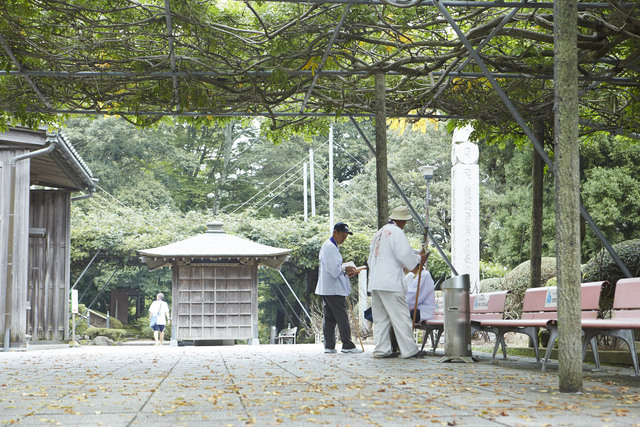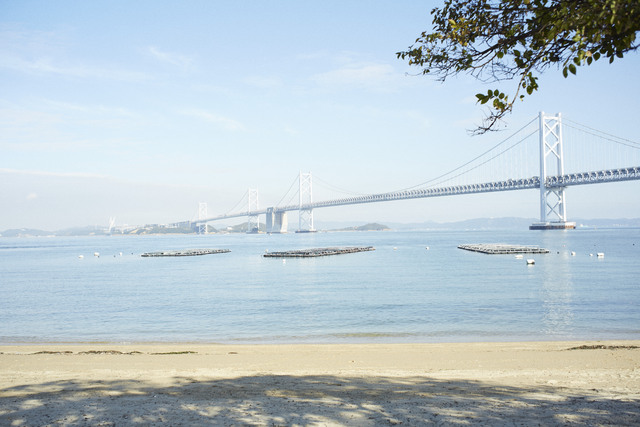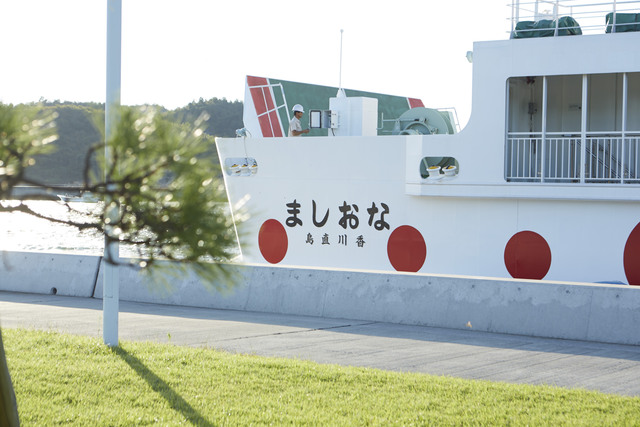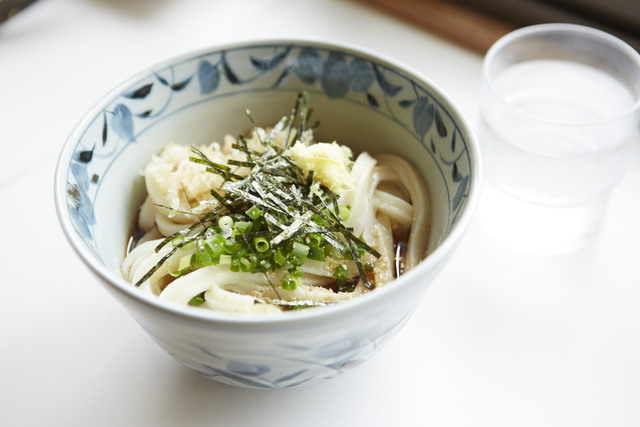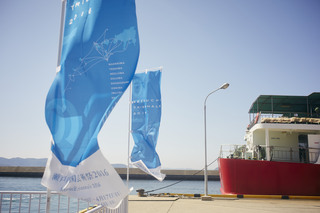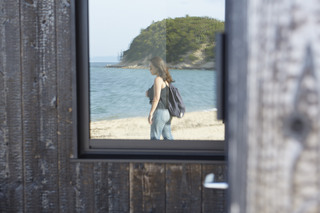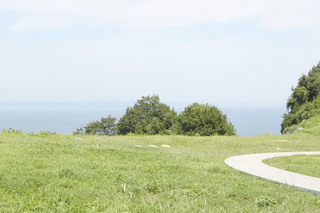In spite of being the smallest prefecture in Japan, Kagawa is celebrated for its wealth of nature. There are many attractions here you just cannot miss. Historic heritages include Ritsurin Garden, Kotohira-gu Shrine, the 88 temples of the Shikoku pilgrimage, artworks and galleries and the smaller islands of distinct character, to name a few. Kagawa is also famous for udon noodles, so much so that it is referred to as the “udon prefecture”.
1.RITSURIN GARDEN
Ritsurin Garden is one of the most famous Japanese style gardens in Japan. In recent years, it has been known for receiving the highest rating given by the Michelin Green Guide Japan.
This circuit style daimyo garden is said to preserve the appearance of gardens during the early Edo period and is the largest among the gardens that have been designated as places of special scenic beauty by the national government. One of the best ways to appreciate the garden is to have some tea or a meal at the elegant tea houses located within the garden.
This circuit style daimyo garden is said to preserve the appearance of gardens during the early Edo period and is the largest among the gardens that have been designated as places of special scenic beauty by the national government. One of the best ways to appreciate the garden is to have some tea or a meal at the elegant tea houses located within the garden.
2. KOTOHIRA-GU SHRINE
The Kotohira-gu shrine, affectionately called “Konpirasan” by the local people, is located at the middle of the mountain and is renowned for the long flight of stone steps – 765 in all – leading up to the main shrine (Hongu). A total of 1368 steps leads to the shrine at the rear of Kotohira-gu (Okusha). There are a variety of shops on the both sides of the road approaching the shrine, as well as shrine buildings and cultural facilities.
3.SHIKOKU 88 PILGRIMAGE
Shikoku 88 pilgrimage is a long journey of 1400 km that must be completed to visit (in a clockwise order) the 88 temples associated with Kobo Daishi (or Kukai), the Japanese monk revered in the four prefectures of Shikoku. The pilgrimage is usually completed on foot (aruki-henro); you will see many pilgrims dressed in white, regardless of age or gender.
4. SHAMIJIMA
Shamijima used to be an island adjacent to the end of Seto-Ohashi Park, but Shamijima is now connected to Sakaide city. It is one of the best spots from which to view the great bridge (Seto-Ohasi) and the sea, all in very quiet surroundings. The view of the Inland Sea from Higashiyama Kaii Setouchi Art Museum is also extraordinary.
5.NAOSHIMA
Known as Art Island, Naoshima is dotted with many museums, outdoor art pieces, as well as installation art designed and/or built by internationally renowned artists and architects, including Tadao Ando, James Turrell and Yayoi Kusama. Art has been merged with the natural beauty of nature, inviting visitors to experience the “non-ordinary”.
6.SHODOSHIMA
The second largest island in the Inland Sea is a Japanese style resort island. The main products found here are olives, somen noodles (fine dried wheat noodles) and soy sauce. Attractions on Shodoshima includes Kankakei Gorge (one of the three most beautiful gorges in Japan), the beautiful scenery of the terraced rice paddies at Nakayama Senmaida and Angel Road, which appears only during low tide. The beauty of the island's nature and the Setouch style streets and art combine to form the island’s distinctive atmosphere.
7.TESHIMA
Teshima is currently garnering attention as the second "art island" following Naoshima. Blessed with abundant nature represented by generous spring water and terraced rice paddies (tanada), it is dotted with many art pieces and home to Teshima Art Museum. One of the best ways to get around the island is by cycling.
8.YASHIMA
Formerly an island separated from Takamatsuby shallow water. Yashima is now a peninsula attached to Takamatsu city. The viewing platform at the peak of Yashima is a great place from which to observe the beauty of the Inland Sea, dotted with thousands of islands and the city of Takamatsu. At the foot of Yashima is Shikoku village, where traditional architecture, including restored farmhouses and the works of Tadao Ando, a globally renowned architect are exhibited alongside seasonal plants and flowers.
9.UDON
The soul food of the local Kagawa people is Sanuki udon. The thick white noodles have a silky texture and a distinct firmness, and is often complemented by a light brown soup with iriko (dried young sardines) broth. There are around 800 udon restaurants of various styles in Kagawa prefecture, open day and night.
----------------------------------------------------------------------------------------------------------------------------------------
[Access from Tokyo]
By Airplane: Appx. 1.2 hour from Haneda/ Narita Airports to Takamatsu Airport (ANA/JAL/Jetstar)
By Train: Appx. 3.5 hours from Tokyo Station to Okayama Station by Shinkansen (bullet train) and 1 hour from Okayama station to Takamatsu station by JR Marine Liner (express train). Appx. 5 hours in total
By Bus: 10 hours from Tokyo/ Shinjyuku Station to Takamatsu Station by night bus
[Access from Osaka]
By Train: Appx. 50 minutes from Shin Osaka Station to Okayama Station by Sinkansen (bullet train) and 1 hour from Okayama station to Takamatsu station by Marine Liner (express train). Appx. 2 hours in total
By Bus: 4 hours from Osaka/Umeda Station to Takamatsu Station
-----------------------------------------------------------------------------------------------------------------------------------------
[Access from Tokyo]
By Airplane: Appx. 1.2 hour from Haneda/ Narita Airports to Takamatsu Airport (ANA/JAL/Jetstar)
By Train: Appx. 3.5 hours from Tokyo Station to Okayama Station by Shinkansen (bullet train) and 1 hour from Okayama station to Takamatsu station by JR Marine Liner (express train). Appx. 5 hours in total
By Bus: 10 hours from Tokyo/ Shinjyuku Station to Takamatsu Station by night bus
[Access from Osaka]
By Train: Appx. 50 minutes from Shin Osaka Station to Okayama Station by Sinkansen (bullet train) and 1 hour from Okayama station to Takamatsu station by Marine Liner (express train). Appx. 2 hours in total
By Bus: 4 hours from Osaka/Umeda Station to Takamatsu Station
-----------------------------------------------------------------------------------------------------------------------------------------
31 records
 FIND SHIKOKU
FIND SHIKOKU







